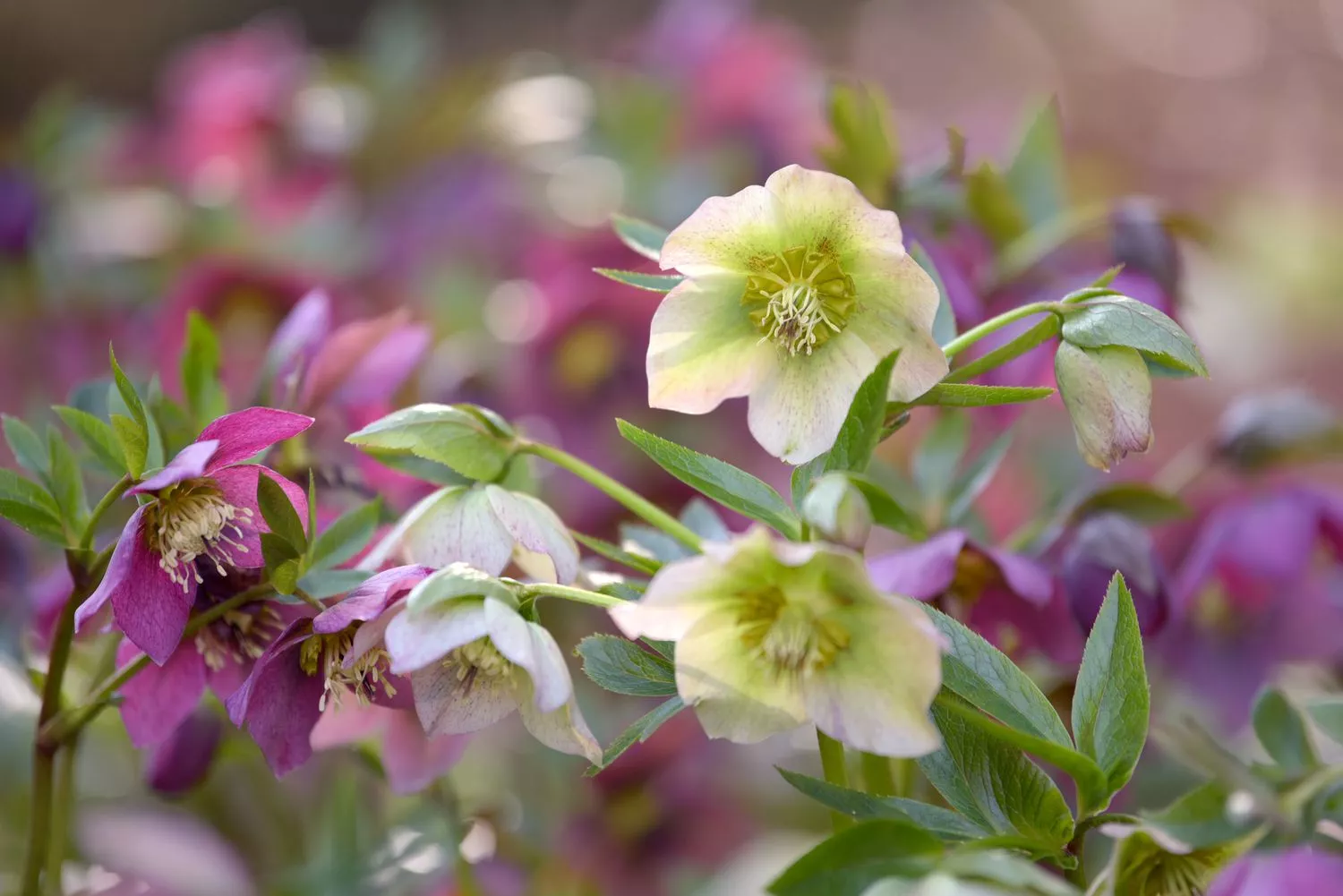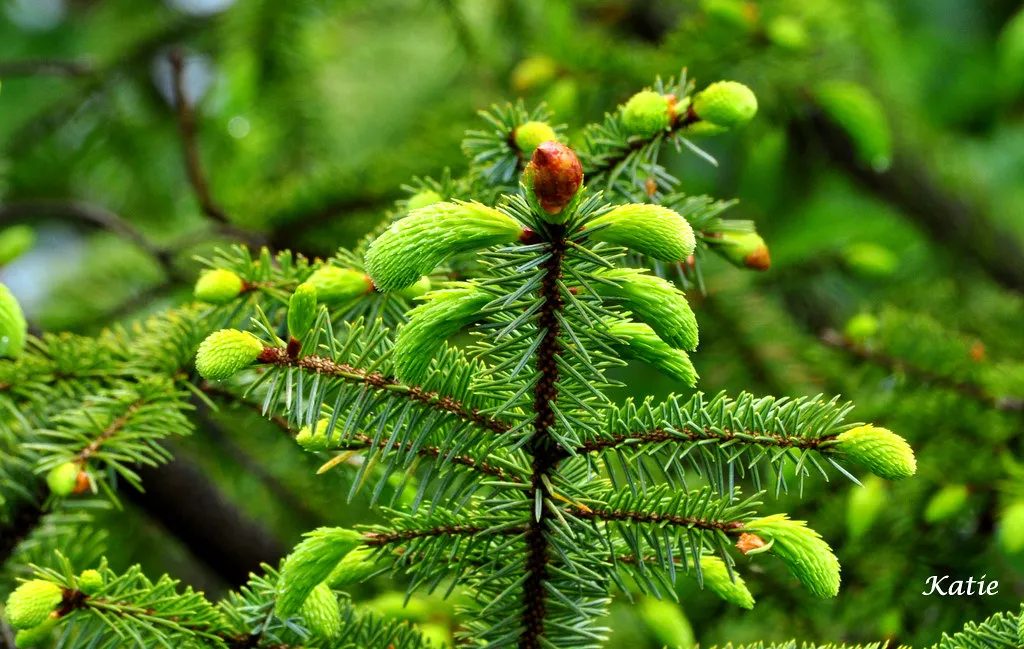Shady Solutions: 26 Best Shade Annuals offers a curated list of annual plants thriving in low-light conditions. These plants add vibrant color to shaded garden areas.
Gardening enthusiasts often face challenges when dealing with shaded areas in their gardens. Finding the right plants that flourish in low-light conditions can transform these spots into lush, colorful spaces. Annuals are an excellent choice for such areas because they grow quickly and provide seasonal bursts of color.
This guide introduces 26 of the best shade-loving annuals, ensuring your shaded garden remains vibrant throughout the growing season. From begonias to impatiens, these plants are perfect for adding beauty and life to any shaded corner of your garden.
Introduction To Shade Annuals
Gardening in shaded areas can be challenging. Many plants need full sunlight to thrive. But shade annuals are here to save the day. These plants are perfect for areas with limited sunlight. They can brighten up the darkest corners of your garden. Let’s explore the benefits and how to choose the right ones.
Benefits Of Shade Annuals
Shade annuals offer many benefits. They grow well in low-light areas. This makes them ideal for spaces under trees or near buildings. Here are some key benefits:
- Low Maintenance: Shade annuals require less water and care.
- Versatility: They can be used in various garden settings.
- Aesthetic Appeal: Brighten up dark spaces with vibrant colors.
- Seasonal Variety: Enjoy different blooms throughout the year.
Choosing The Right Shade Annuals
Selecting the right shade annuals is crucial. Consider the amount of light your garden receives. Some plants need partial shade, while others thrive in full shade. Here are some tips to help you choose:
- Assess the Light: Measure how much sunlight your garden gets.
- Check Soil Quality: Ensure the soil is well-draining and fertile.
- Research Plants: Look for plants that match your garden’s conditions.
- Mix and Match: Combine different plants for a colorful display.
Below is a table of some popular shade annuals:
| Plant Name | Light Requirement | Bloom Time |
|---|---|---|
| Impatiens | Partial to Full Shade | Summer to Fall |
| Begonias | Partial Shade | Spring to Fall |
| Hostas | Full Shade | Summer |
| Fuchsia | Partial Shade | Summer |
Shade annuals are a great addition to any garden. They add color and life to shaded areas. Choose wisely, and your garden will thrive even in low light.
Impatiens
Impatiens are a popular choice for shady gardens. These annuals bring vibrant color to darker spaces. They are known for their bright blooms and lush foliage.
Growing Conditions
Impatiens thrive in shady areas with indirect sunlight. They prefer well-drained soil rich in organic matter. Regular watering is essential to keep the soil moist. Avoid waterlogging to prevent root rot. Impatiens also benefit from a balanced fertilizer every few weeks.
Popular Varieties
There are many varieties of Impatiens, each with unique features. Here are a few popular ones:
- Impatiens walleriana: This variety has bright, multi-colored blooms.
- New Guinea Impatiens: Known for larger flowers and variegated leaves.
- Double Impatiens: These have rose-like double blooms.
- Fusion Impatiens: Noted for their unique flower colors and patterns.
Impatiens add a splash of color to any shady garden. They are easy to grow and maintain. Choose the right variety for your garden and enjoy their beauty.
Begonias
Begonias are a popular choice for shady gardens. They offer vibrant blooms and lush foliage. Perfect for adding color where the sun doesn’t shine. Let’s dive into how to plant and care for these beauties.
Planting Tips
Begonias thrive in well-drained soil. Ensure the soil is rich in organic matter. Plant them in areas with partial to full shade.
Space the plants 8-12 inches apart. This allows for good air circulation. Water the soil before planting. This helps the roots establish quickly.
- Choose a shady spot.
- Prepare the soil with compost.
- Space plants properly.
- Water thoroughly after planting.
Maintenance And Care
Begonias need regular watering. Keep the soil moist but not soggy. Mulch around the plants to retain moisture. Deadhead spent blooms to encourage new growth.
| Task | Frequency |
|---|---|
| Watering | Twice a week |
| Deadheading | Weekly |
| Mulching | Monthly |
Protect begonias from pests. Common pests include aphids and spider mites. Use natural insecticides if necessary.
- Check for pests regularly.
- Use natural insecticides if needed.
- Keep the area clean and free from debris.
With these tips, your begonias will flourish. Enjoy the burst of color in your shady garden!
:max_bytes(150000):strip_icc()/Screenshot2024-04-30at1.26.43PM-7fc7f9ade44b401898696ec134ba00c4.png)
Credit: www.thespruce.com
Coleus
Meet the vibrant Coleus, a favorite among shade gardeners. Known for its stunning foliage, it adds a splash of color to any garden. Easy to grow and maintain, Coleus is a fantastic choice for beginners and seasoned gardeners alike.
Colorful Foliage
Coleus plants are celebrated for their colorful foliage. Their leaves come in a variety of hues such as red, pink, yellow, and green. These colors create a striking contrast in shaded areas, making your garden pop.
The leaves are often multi-colored with intricate patterns. This makes them a focal point in any garden. With so many varieties, you can easily find the perfect match for your garden’s color scheme.
Best Growing Practices
To ensure your Coleus thrives, follow these best growing practices:
- Light: Coleus prefers partial shade to full shade.
- Soil: Use well-draining soil rich in organic matter.
- Water: Keep the soil consistently moist but not soggy.
- Temperature: Ideal temperatures range from 60°F to 75°F.
- Fertilizer: Feed with a balanced fertilizer every month.
Pinch off flowers to encourage bushier growth. This helps the plant focus on its vibrant leaves rather than blooming.
Monitor for pests like aphids and spider mites. Use organic insecticides to manage any infestations.
| Aspect | Details |
|---|---|
| Light | Partial to Full Shade |
| Soil | Well-draining, Rich in Organic Matter |
| Water | Consistently Moist |
| Temperature | 60°F to 75°F |
| Fertilizer | Balanced, Monthly |
By following these tips, your Coleus will thrive and brighten any shady spot.
Fuchsia
Fuchsia is a vibrant, beautiful plant that adds color to shaded gardens. Known for its unique, pendulous flowers, fuchsia is a favorite among gardeners who want to brighten up shaded areas. Let’s explore the flowering patterns and ideal growing conditions for fuchsia.
Flowering Patterns
Fuchsia flowers are known for their stunning, two-toned colors. These blossoms hang gracefully, creating a cascading effect. They typically bloom from early summer to the first frost.
The flowers come in shades of pink, purple, white, and red. The bloom time can be extended with proper care, ensuring continuous color in your garden. Fuchsia plants produce flowers in clusters, making them a focal point in any shaded garden.
Ideal Soil And Watering
Fuchsia plants thrive in well-draining soil rich in organic matter. They prefer slightly acidic to neutral pH levels, ranging from 6.0 to 7.0. Adding compost or peat moss can improve soil quality.
Proper watering is crucial for fuchsia’s health. They need consistently moist soil, but not waterlogged. Water them deeply once or twice a week, adjusting based on weather conditions.
Mulching around the base of the plant helps retain moisture and keeps the roots cool. Use organic mulch like straw or wood chips for best results.
Here’s a quick reference table for fuchsia care:
| Aspect | Details |
|---|---|
| Soil Type | Well-draining, rich in organic matter |
| pH Level | 6.0 to 7.0 |
| Watering | Consistently moist, not waterlogged |
| Mulching | Organic mulch like straw or wood chips |
By understanding these key aspects, you can ensure your fuchsia plants thrive and bring vibrant color to your shaded garden.

Credit: awaytogarden.com
Lobelia
Lobelia is a charming annual known for its vibrant blue flowers. This plant thrives in shady areas and brings a touch of elegance to any garden. Lobelia is easy to grow and requires minimal maintenance, making it a favorite among gardeners. Let’s explore the beauty and benefits of Lobelia under different headings.
Seasonal Blooms
Lobelia blooms from spring through fall, providing continuous color. The flowers are small but abundant, creating a stunning visual effect. They come in various shades of blue, purple, and white. These colors can brighten up the shadiest spots in your garden. Lobelia’s long blooming period ensures your garden remains lively for months.
Here’s a quick look at the blooming schedule:
| Season | Bloom Period |
|---|---|
| Spring | Early to Late |
| Summer | All Season |
| Fall | Early to Mid |
Companion Planting
Lobelia pairs well with many other shade-loving plants. It is an excellent companion for ferns, hostas, and astilbes. These combinations create a lush, layered look in your garden. Lobelia’s bright flowers contrast beautifully with the green foliage of these plants. It also attracts beneficial insects, helping to keep your garden healthy.
Consider these companion plants for Lobelia:
- Ferns: Add texture and height.
- Hostas: Provide lush, broad leaves.
- Astilbes: Offer feathery, colorful blooms.
Planting Lobelia with these companions creates a balanced and visually appealing garden. Your shady spots will become vibrant and full of life.
Torenia
Torenia, also known as the wishbone flower, is a vibrant annual. It thrives in shady gardens, adding a splash of color. With its unique trumpet-shaped blooms, Torenia is a favorite among gardeners. Let’s explore its unique features and how to keep it pest and disease-free.
Unique Features
Torenia stands out with its striking, trumpet-shaped flowers. These blossoms come in shades of blue, purple, pink, and white. The plant’s lush green foliage complements the vibrant flowers, creating a beautiful contrast. Torenia blooms from late spring to early fall, providing continuous color.
One unique feature is its wishbone-shaped stamens. This gives the flower its common name. Torenia also attracts pollinators like bees and butterflies, making it beneficial for your garden. Its compact growth makes it perfect for containers, borders, and hanging baskets.
Pest And Disease Control
Torenia is generally resistant to pests. However, it can sometimes attract aphids and snails. To control aphids, use a soapy water spray. For snails, place barriers like crushed eggshells around the plants.
Disease-wise, Torenia may face powdery mildew and root rot. Ensure good air circulation to prevent powdery mildew. Avoid overwatering to prevent root rot. Water the plant at the base, keeping the foliage dry.
| Pests | Control Methods |
|---|---|
| Aphids | Soapy water spray |
| Snails | Crushed eggshell barriers |
| Diseases | Prevention Tips |
|---|---|
| Powdery Mildew | Ensure good air circulation |
| Root Rot | Avoid overwatering, water at the base |

Credit: www.timbertech.com
Browallia
Browallia, also known as the amethyst flower, is a stunning annual that thrives in shady areas. Its vibrant blue, purple, or white flowers add a splash of color to any garden. Browallia is easy to grow and maintain, making it a popular choice for both beginner and seasoned gardeners.
Light Requirements
Browallia prefers partial to full shade. It flourishes in areas where it receives filtered sunlight or dappled shade. Direct sunlight for extended periods can damage the delicate blooms. Ideal planting spots include under trees or in shaded garden beds.
Fertilization Tips
To ensure lush growth and vibrant flowers, follow these fertilization tips:
- Use a balanced fertilizer with equal parts nitrogen, phosphorus, and potassium.
- Fertilize every 4-6 weeks during the growing season.
- Avoid over-fertilizing as it can lead to weak, leggy plants.
For best results, incorporate slow-release granules into the soil at planting time. Browallia responds well to organic compost, which enriches the soil and promotes healthy growth.
Caladium
Caladium is a stunning tropical plant known for its vibrant foliage. These plants add a pop of color to shady garden areas.
Leaf Varieties
Caladiums come in numerous leaf varieties. Each offers unique colors and patterns. Here are some popular options:
- Heart of Jesus: Large leaves with red veins and green edges.
- White Christmas: White leaves with green veins.
- Red Flash: Dark green leaves with red centers and veins.
These varieties thrive in shaded areas. They can transform any garden space.
Winter Care
Caladiums require special care during winter. They are not frost-tolerant.
- Dig up the tubers before the first frost.
- Clean the tubers and let them dry.
- Store them in a cool, dry place.
- Replant them when the weather warms up.
Proper winter care ensures healthy growth next season. Follow these steps for beautiful caladiums year after year.
| Task | Details |
|---|---|
| Dig Up Tubers | Before the first frost |
| Clean Tubers | Remove soil and let dry |
| Store Tubers | Cool, dry place |
| Replant | When weather warms up |
Viola
The Viola is a favorite among gardeners for its vibrant colors and charming appearance. It thrives in shady areas, making it perfect for adding life to those often-overlooked spots in your garden.
Climate Adaptability
Violas are quite adaptable and can grow in various climates. They prefer cooler temperatures and can tolerate a bit of frost. This makes them an excellent choice for spring and fall gardens. They can also thrive in partial shade during summer.
Here’s a quick overview of Viola’s climate adaptability:
| Climate | Adaptability |
|---|---|
| Cool Temperatures | High |
| Partial Shade | Moderate |
| Frost | Tolerant |
Propagation Methods
Violas are easy to propagate, making them a gardener’s delight. Here are some common propagation methods:
- Seed Sowing: Sow seeds in late winter or early spring.
- Cuttings: Take cuttings in summer and root them in moist soil.
- Division: Divide plants in early spring or fall.
Each method has its benefits, but seed sowing is often the most popular.
Follow these steps for successful seed sowing:
- Start with a seed tray filled with compost.
- Sow seeds thinly and cover lightly with soil.
- Keep the soil moist and place the tray in a cool, shaded area.
- Transplant seedlings once they have a few true leaves.
With these tips, you can enjoy a beautiful display of Violas in your garden. Their adaptability and ease of propagation make them a top choice for gardeners everywhere.
Sweet Alyssum
Sweet Alyssum is a charming annual that thrives in shaded areas. Its delicate clusters of tiny flowers create a carpet of beauty. This versatile plant not only adds aesthetic appeal but also serves multiple purposes in your garden.
Ground Cover Benefits
Sweet Alyssum is an excellent ground cover option. It spreads quickly, filling spaces with its lush foliage. This helps to suppress weeds and retain soil moisture. The plant forms a dense mat, preventing erosion and protecting your garden beds.
| Feature | Benefit |
|---|---|
| Fast-spreading | Covers ground quickly |
| Dense foliage | Suppresses weeds |
| Moisture retention | Reduces watering needs |
Fragrance And Pollinators
Sweet Alyssum is known for its delightful fragrance. Its sweet scent attracts beneficial pollinators like bees and butterflies. This makes it a valuable addition to any garden, contributing to overall plant health and biodiversity.
- Bees: Essential for pollinating many garden plants.
- Butterflies: Add beauty and aid in pollination.
- Other Beneficial Insects: Improve garden health.
Plant Sweet Alyssum near vegetables and other flowering plants. This will enhance pollination and boost yields. Its continuous bloom cycle ensures a steady supply of nectar for pollinators.
New Guinea Impatiens
New Guinea Impatiens are vibrant annuals that thrive in shady spots. Their bright blooms and lush foliage can light up any garden. These flowers are ideal for shady areas that need a pop of color.
Heat Tolerance
New Guinea Impatiens are known for their excellent heat tolerance. They can withstand higher temperatures better than other shade annuals. Even in hot climates, these plants will continue to bloom profusely.
Ensure they receive adequate water to stay healthy. Consistent watering helps them manage heat stress and keeps their colors vibrant. Mulching around the plants can also help retain soil moisture.
Design Ideas
Use New Guinea Impatiens in various garden designs. They work well in:
- Flower beds: Plant them in clusters for a bold color display.
- Containers: Perfect for patios and balconies, adding instant charm.
- Hanging baskets: Their trailing nature looks stunning in elevated positions.
Mix them with other shade-loving plants for a diverse garden. Consider pairing them with ferns and hostas for texture variety. New Guinea Impatiens also blend well with other shade annuals like begonias and coleus.
| Feature | Details |
|---|---|
| Bloom Colors | Red, pink, purple, white, orange |
| Light Requirement | Partial shade to full shade |
| Soil Type | Well-drained, rich in organic matter |
| Watering Needs | Consistent moisture, avoid waterlogging |
With their resilience and beauty, New Guinea Impatiens are a fantastic choice for shady gardens. Their easy-care nature makes them perfect for both novice and experienced gardeners.
Frequently Asked Questions
What Are The Best Shade Annuals For Gardens?
Some of the best shade annuals include Impatiens, Begonias, and Coleus. These plants thrive in low light and add vibrant color to shaded areas.
Can Shade Annuals Grow In Full Shade?
Yes, many shade annuals like Impatiens and Torenia can grow well in full shade. They are perfect for darker garden corners.
How To Care For Shade Annuals?
Shade annuals need well-drained soil and regular watering. Avoid overwatering to prevent root rot. Fertilize monthly for best results.
Do Shade Annuals Attract Pollinators?
Yes, some shade annuals like Begonias and Fuchsias attract pollinators such as bees and hummingbirds. They can enhance garden biodiversity.
Conclusion
Brighten up your shady garden spaces with these 26 best shade annuals. These plants offer vibrant colors and lush foliage. They thrive in low light, adding beauty to your garden. Experiment with different combinations to create your perfect garden oasis.
Enjoy the ease and beauty these annuals bring to your outdoor spaces.



